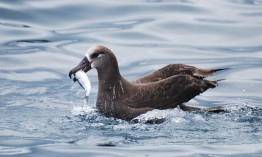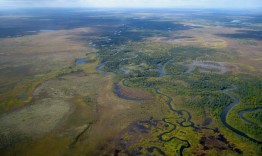With two degrees under her belt and dissertation research to complete, Meryl Mims found herself in southeastern Arizona’s Sky Islands in the summer of 2013. In a landscape known for the juxtaposition of its sprawling features—where towering, forested mountains seep upward through the desert’s dry, cracked surface—a two-inch long frog captured Mims’ attention. “We were already out there and we were hearing the Arizona treefrogs.
Read more »Ocean Modeling Forum to bring human element to herring fishery, others
The Ocean Modeling Forum, a collaboration between the School of Aquatic and Fishery Sciences and NOAA Fisheries, is attempting to bring together multiple science models and people who care about a particular ocean resource or fishery to decide what’s most important for its vitality and the communities it serves. The Forum will address ocean management issues, facilitating conversations among a multitude of stakeholders, and will focus their primary efforts on the Pacific herring fishery in the coming months.
Read more at UW Today »Chemical tags in ear bones track Alaska's Bristol Bay salmon
Scientists from Aquatic and Fishery Sciences and other institutions are learning a lot about where Chinook salmon swim in Alaska’s Bristol Bay region through chemical signatures recorded in their ear bones. Similar to a tree’s growth rings, this bone—called an otolith—accumulates layers as the fish grows. Acting as a little recorder, each layer of the otolith corresponds to the unique chemical signatures of the waters in which they swam.
Read more at UW Today »Fishermen, communities need more than healthy fish stocks
Aquatic and Fishery Sciences’ Chris Anderson and a team of scientists have developed a new assessment that looks at fisheries’ economic and community benefits, as well as ecological health. Anderson and his team created new ways of measuring three performance indicators – ecology, economics, and community – all of which can be applied across species, management approaches, and nations. To characterize a fishery, the authors drew on local experts’ knowledge, scoring each response and averaging them in each category.
Read more at UW Today »UW ecologist and citizen scientists lead the charge against invasive crayfish
There’s no time like the present for Pine Lake residents—an invasive species of crayfish has taken hold in their backyard and community members are mobilizing to give them the boot. Even though it means setting aside several hours a week during western Washington’s best weather months, these citizen scientists swap their fishing poles for cage traps, hiking boots for clipboards, and swimsuits for scientific instruments to restore the lake’s ecosystem.
Read more »





